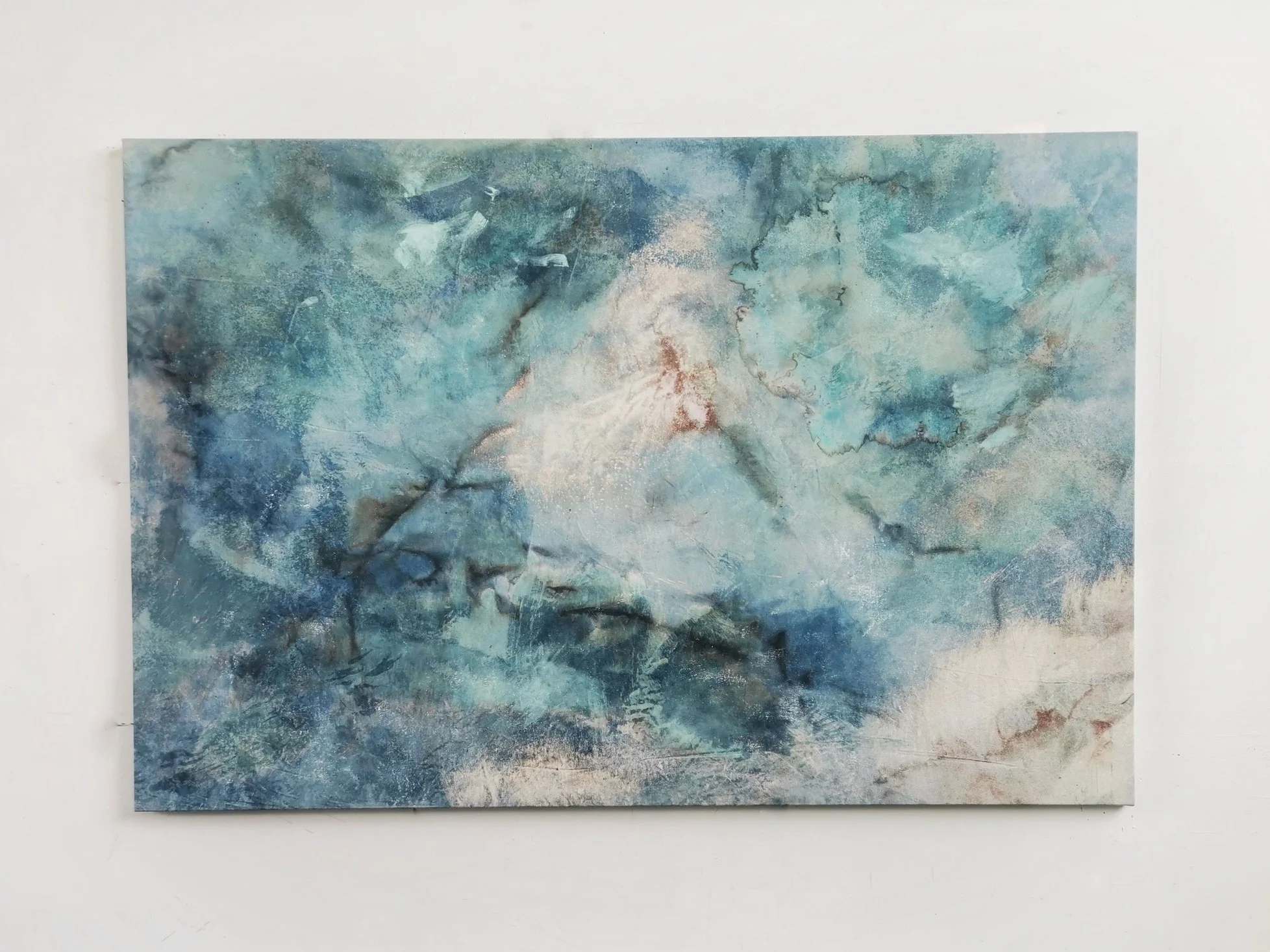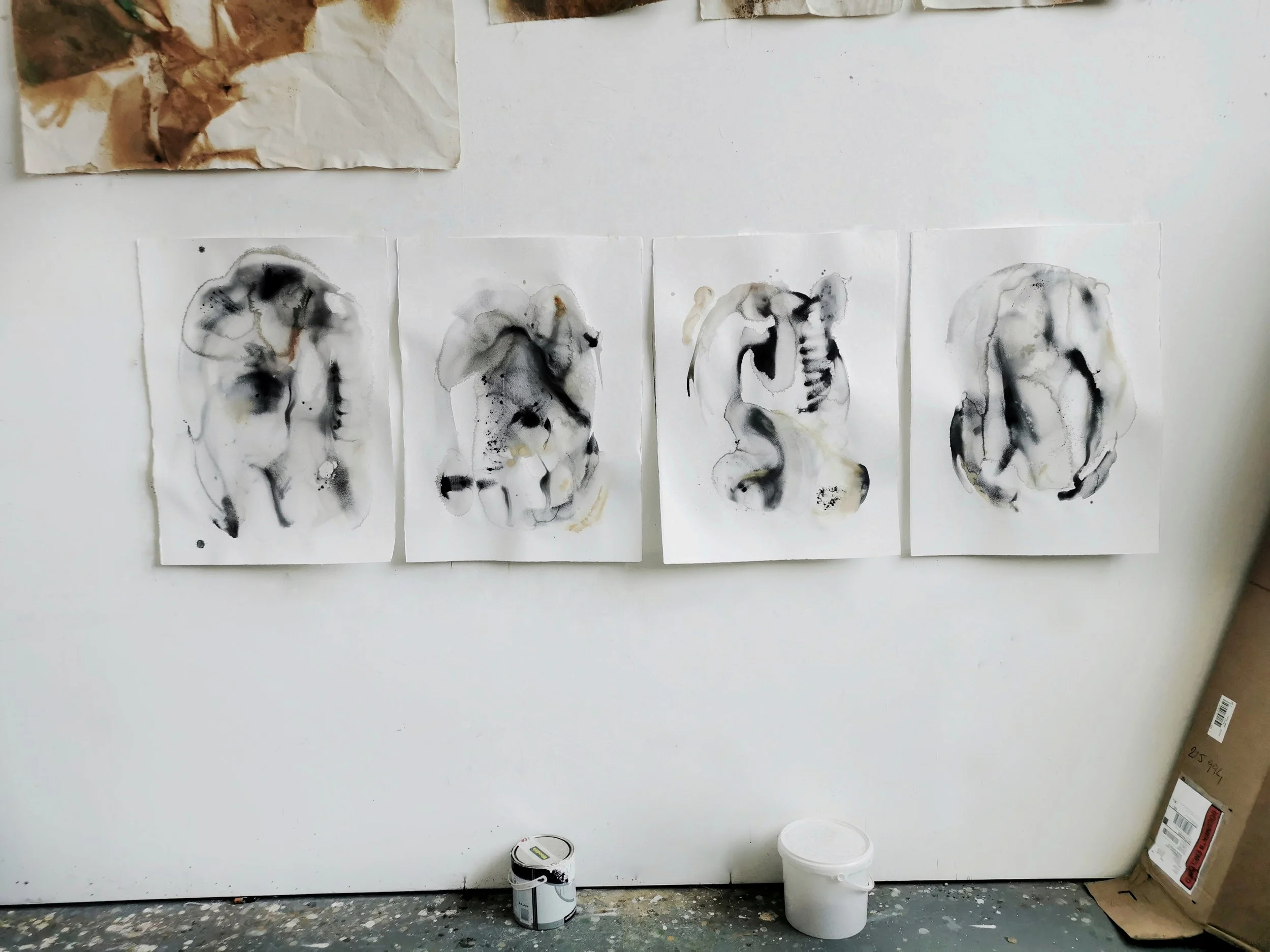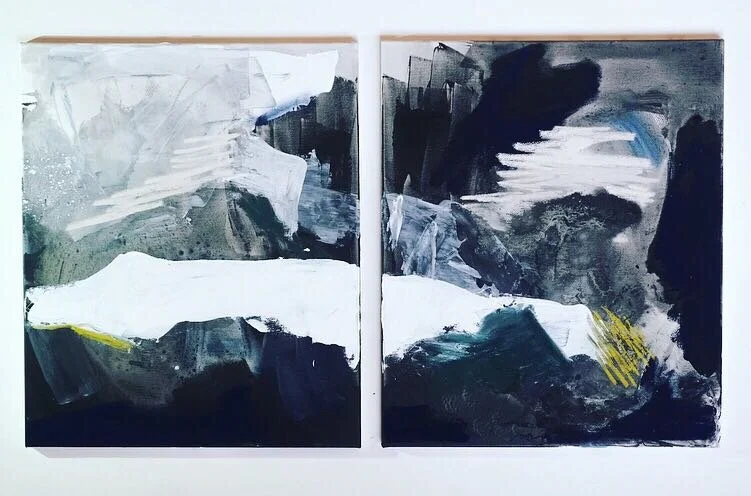The paintings in this new collection -‘Between Being and Becoming’ explore the concept of thresholds - the liminal spaces where transformation occurs. The paintings in this series portray moments of tension found where one state of being transitions into another. These works inquisite the borders we encounter in our personal, cultural, and geographical landscapes.
The abstract forms and textures in these pieces evoke both macro and micro views of land - aerial perspectives of vast terrains and close-up examinations of weathered surfaces. Shifting focus between scale in this way asks us to broaden our views of space and place.
When painting, as I apply ink in layers, I hold myself in delicate balance between control and surrender of form. As the pigments and inks evaporate, floating charred particles roam and sidle their way into place much like dust or sand would on the air and earth. I punctuated the monochrome pallet with occasional bursts of pastel colour, the glinting side stories that line the edge of transition, informing our intuition as we move through moments.
In some works, distinct lines are cut into the paper, causing an interruption to the image. These delineations speak to the human tendency to categorize and separate, as we search for familiarity and meaning. Yet the organic flow between sections challenges these rigid divisions, suggesting a permeability of the borders we often perceive as fixed.
The muted palette is created from eucalypt/gum bark, banksia cones and bones. The eucalypt tree is self-shedding, dropping its limbs and outer layers of bark as it grows. I gathered banksia cones on the coast, where seasonal fire had scorched through the landscape, raising temperatures high enough for the banksia seeds to be released from the cones. I collected ccattered bones from the valley landscape. I charred them in a wood stove until the calcite blackened, and ground them into a fine pigment.
The natural materials move through their own process of being and becoming. In my hands, the cyclical nature of these materials, transformed by the elements form a dialogue between creation and destruction.
Ultimately, this series speaks to the transformative potential of threshold spaces - in our personal journeys, our cultural interactions, and our relationship with the physical world around us.





























